| クルーガ強制収容所(Klooga: エストニア) |
||
| <バルト三国> クルーガ゙ ヴァイヴァラ ジャガラ 個別収容所詳細ヘ | ||
概要 クルーガ(Klooga)強制収容所は、1943年9月にエストニアのHarju郡で、第二次世界大戦中、クルーガの村に近いドイツ占領のエストニアで設立されたVaivara強制収容所複合施設のナチ強制労働サブキャンプであった。 ※ 英 Klooga Concentration Camp 独 KZ Klooga エストニア Klooga koonduslaager 日 クルーガ強制収容所 ヴァイヴァラ収容所の集合体は、ドイツ軍のハンス・アウマイヤー(Hans Aumeier)、オットー・ブレナニス(Otto Brennais)、フランツフォン・ボドマン(Franz von Bodmann)が指揮をとり、数カ所が短期間だけ存在した20の野外収容所で構成されていた。 クルーガでは、無慈悲な殺人、流行病、悪列な労働条件から1800~2000人の囚人が亡くなったと推定されている。 彼らのほとんどはユダヤ人だった。 生き残った人々は、ソビエトの侵攻に先立ち、占領されたポーランドのシュトゥットーフの強制収容所に運ばれた。 ナチス・ドイツの占領を憂慮して、エストニアはバルト諸国とベラルーシの西部を統治していたドイツの民間政権であるライヒス・ミシサリアット・オストランドの一部であった。その活動の時間の経過とともに、クルーガはいつでも約1,500~2,500人の男性と女性の囚人を収容していた。 囚人には、ソ連捕虜、エストニアの政治犯、ユダヤ人が含まれていた。ユダヤ人は、1943年8月と9月にリトアニアのKovnoとVilna、それにラトビアのSalaspilsのゲットーから多数の人々が強制的に移住させられてきた後、それらの人々が大部分を占めるようになった。移住者にはエストニア、ロシア、ルーマニアからの割合いは数字は小なかった。 クルーガ強制収容所で殺害された受刑者の死体は焼却のために積み重ねられた。収容所全体は有刺鉄線で囲まれていた。約600ヤード離れた男女キャンプには、囚人を収容するためための二階建の大きな建物があった。 ドイツのSS部隊と287番目のエストニア警察大隊のメンバーが警備員を務めた。囚人は泥炭収穫や収用所建設のためのセメント工事、また製材所、レンガ工場などで強制労働させられた。収容所運営の初期段階に75人の囚人グループがクルーガ内で抵抗を組織し始めた。 1944年9月、ソビエト軍がナチスが占領するエストニアに向けて進軍したとき、SSは強制収容所を避難させ始めた。多くの囚人は、バルト海の海岸の西にあダンツィッヒ近郊のシュトゥットーフ強制収容所に送られた。 1944年9月19日から22日にかけ、エストニアの60~70人の警備員と20人のSS部隊が守っていた陣営の周縁部で、ドイツの作業部隊は近くの森林に残っている捕虜を組織的に虐殺し始めた。ソビエトの歴史書によると、およそ2,000人が射撃され、彼らの体は燃える木の上に積み重ねられ親された。 一方、エストニアの警察大隊の287人は囚人を守り、ドイツ軍と衝突した。 |
1944年9月22日、ソビエト軍がクルーガの収容所に到着したとき、2,400人の囚人のうちわずか85人がキャンプ内に隠れたり周囲の森林に逃げたりして生き残った。 解放勢力が到着した時、ドイツのSSは逃げたが、収容所の警備員によって燃え尽きることなく積み重ねられた死体の火炎を多数の見つけた。 ドイツSSのHauptsturmfuhrerHans Aumeierは、エストニア全土のキャンプ司令官(Lagerkommandant)であり、アウシュヴィッツ、ダッハウ、ブッヘンヴァルトに関わっていたが、逮捕され、人道に対する罪で裁判にかけられた。彼は1947年12月22日にポーランドのクラクフで死刑判決を受け、1948年1月28日に処刑された。 脚注 1. Council of Europe: "Crimes against Humanity and War Crimes in Estonia" Teaching Remembrance. Cached by Gigablast from www.coe.int LeafletEstonia.asp on Feb 21, 2009. Retrieved February 12, 2015. 2. Riho Vastrik; Meelis Maripuu (2006). "Vaivara concentration camp". In Toomas Hiio; Meelis Maripuu; Indrek Paavle. Estonia 1940?1945: Reports of the Estonian International Commission for the Investigation of Crimes Against Humanity. Tallinn. pp. 719?738. 3. Tauno Rahnu. "Eesti Leegion: Politseipataljonid (Estonian Legion: Police Battalions)". Retrieved March 3, 2015. 4. Gurin-Loov, E. and Gramberg, G. (2001) Eesti Juudi Kogukond = The Jewish Community of Estonia = Evreiskaia obshchina Estonii Archived 2008-02-28 at the Wayback Machine., Tallinn: Eesti Juudi Kogukond. ISBN 9985-78-161-9, p. 14 5. Estonian Ministry of Foreign Affairs: Address by Prime Minister Andrus Ansip in Klooga, Estonia. May 8, 2005 Archived September 27, 2007, at the Wayback Machine. 6. www.kul.ee, Estonian Ministry of Culture. Retrieved on 2008-02-28 参照 1. Arad, Yitzhak, in Encyclopaedia of the Holocaust, vol. 2, pp. 806?807 2. The Holocaust Chronicle by various contributing authors. Publications International, Ltd., 2003. ISBN 0-7853-2963-3 外部リンク 1. Max Jakobson Commission Report: Conclusions of the Estonian International Commission for the Investigation of Crimes Against Humanity. Bibliography. 2.Council of Europe: "Crimes against Humanity and War Crimes in Estonia" cached from www.coe.int LeafletEstonia.asp on Feb 21, 2009. 3.Estonian Ministry of Foreign Affairs: Address by Prime Minister Andrus Ansip in Klooga, Estonia. 出典:Wikipedia英語版より翻訳 |
|
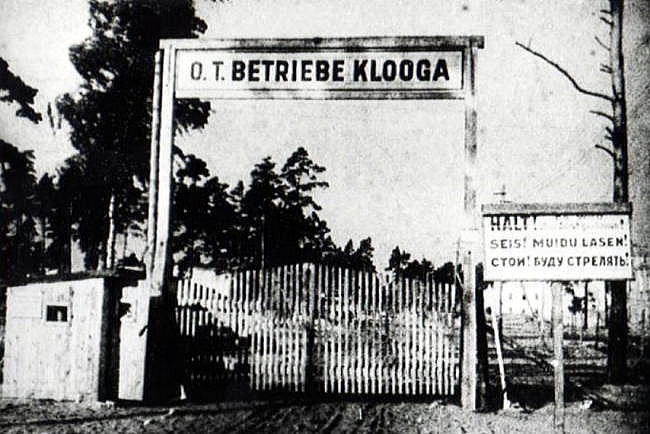 |
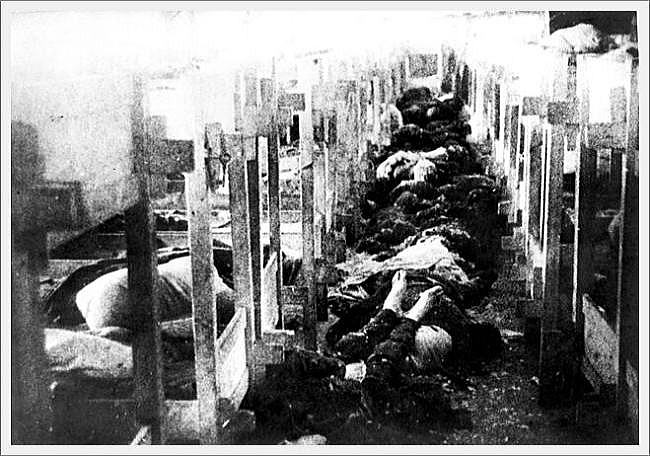 |
|
| Gates of the Klooga concentration camp 出典・Source: Estonica Encyclopedia about Estonia |
Estonia ,Klooga, 1944, Bodies in a barrack in the camp 出典・Source:Holocaust Education & Archive Research Team |
|
 |
 |
|
| Klooga, Estonia, A corpse beside a pile of burnt corpses, September 1944 出典・Source:Holocaust Education & Archive Research Team |
Klooga, Estonia, Corpses that were prepared for burning by Commando 1005 1944 出典・Source:Holocaust Education & Archive Research Team |
|
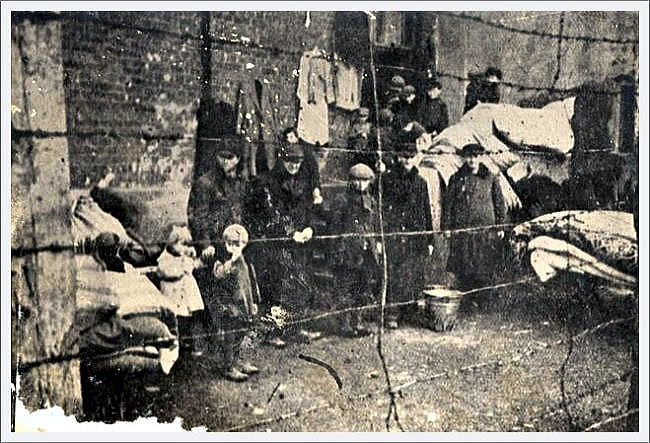 |
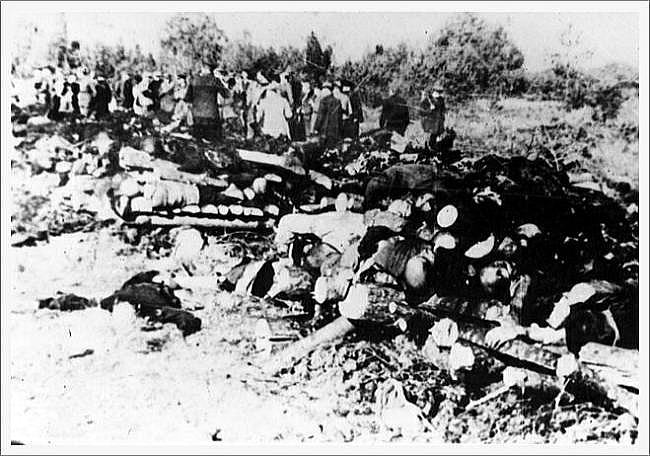 |
|
| Klooga, Estonia, People behind a barbed wire fence in the ghetto 出典・Source:Holocaust Education & Archive Research Team |
Klooga, Estonia, Pile of corpses of camp prisoners 出典・Source:Holocaust Education & Archive Research Team |
|
 |
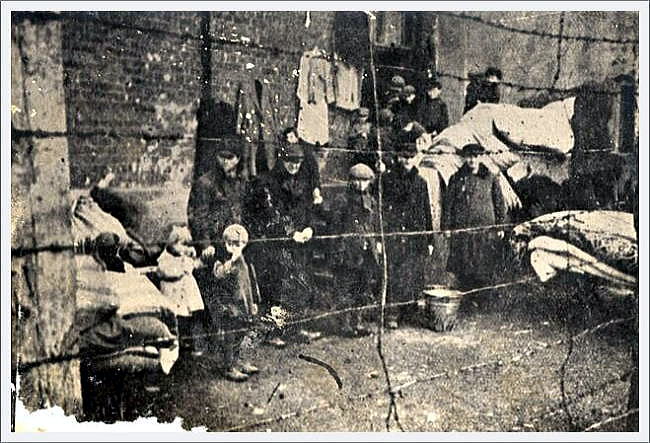 |
|
| Klooga, Estonia, A woman's corpse which was prepared for burning by Commando 1005, 1944 出典・Source:Holocaust Education & Archive Research Team |
Klooga, Estonia, People behind a barbed wire fence in the ghetto 出典・Source:Holocaust Education & Archive Research Team |
|
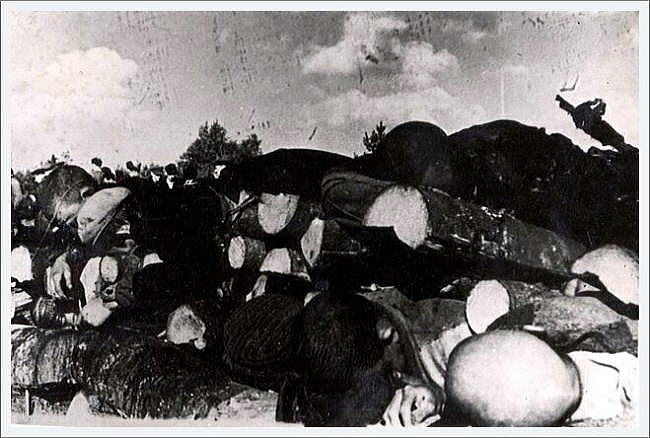 |
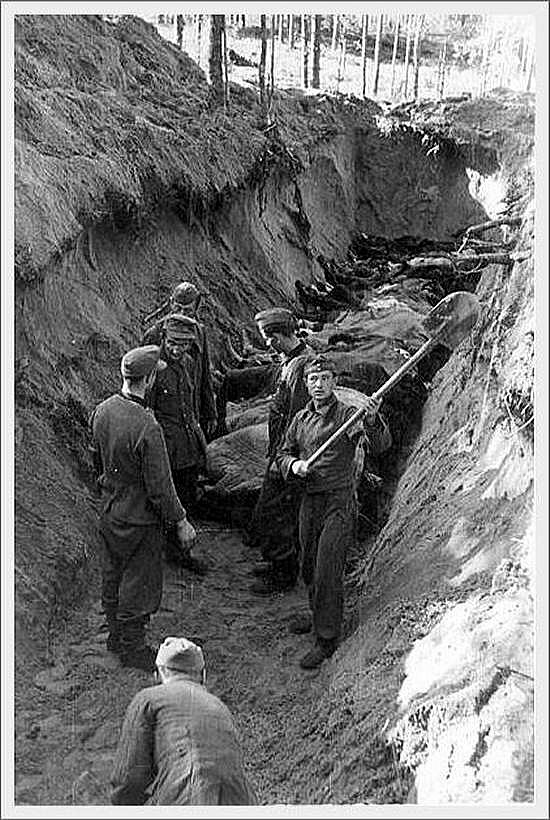 |
|
| Klooga, Estonia, 1945, Bodies between logs 出典・Source:Holocaust Education & Archive Research Team |
Burial pit for corspes of the victims of the Klooga camp 出典・Source:Holocaust Education & Archive Research Team |
|
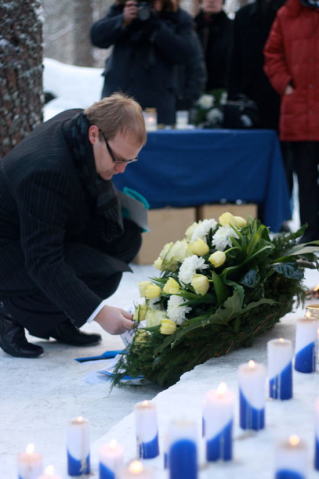 |
 |
|
| At the commemoration ceremony to Holocaust victims held in Klooga, Foreign
Minister Urmas Paet said that today the victims of the horrors of World
War II are being commemorated all over Europe and beyond. “Remembering
what has been and commemorating the victims, today Europe is united in
solidarity,” said Paet. “By remembering the Holocaust, we are recognising
the unique value of every single life,” he added.… 出典・Source:Wikimedia Commons By <a rel="nofollow" class="external text" href="https://www.flickr.com/people/16941867@N06">Estonian Foreign Ministry</a> - <a rel="nofollow" class="external text" href="https://www.flickr.com/photos/estonian-foreign-ministry/5395630048/"> Flickr</a>, CC BY 2.0, Link |
Klooga terroriohvrite uhishaud クルーガ強制収容所、テロリストの隠れ家 出典・Source:Wikimedia Commons By <a href="//commons.wikimedia.org/wiki/User:Vamps" title="User:Vamps" >Vamps</a> - <span class="int-own-work" lang="en">Own work</span>, CC BY-SA 3.0 ee, Link |
|